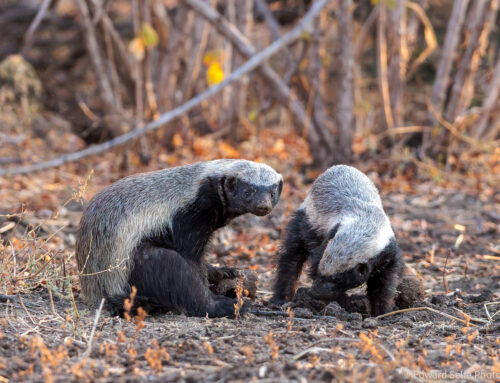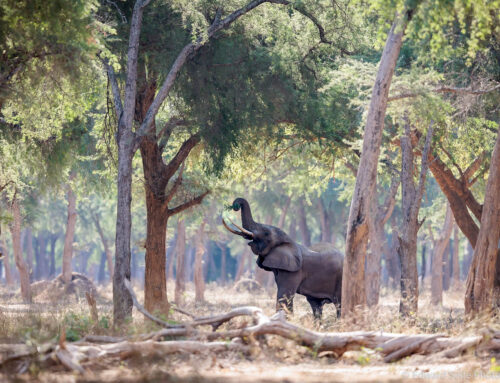The Emerald Season in South Luangwa is a very special time of year; few people know about it as it falls outside the “recommended” travelling times for the area. But most permanent residents — and anyone who has sampled this ‘rains’ period — will tell you that it is a rich, vital and highly rewarding season.
I have been running trips in the early part of the season for many years, including Alessandro’s trip in 2015, Peter & Steve’s trip in 2018, Steve & Geraldine’s trip in 2019 and two trips that were scheduled for 2020 which are still pending for 2022. Increasingly guests are interested to see the other side of the dry, dusty and dramatic winter season to complete their understanding and experience of the extraordinary Luangwa ecosystem.
Connor booked the trip with me while working in Kitwe. The appeal of a private safari where we could really prioritise his learning and his experience was strong and I ensured that each outing into the bush was filled with learning and skills-development alongside the sightings that we enjoyed. With water in abundance after the rains, game is spread all over the region, so there are not the concentrations of wildlife that punctuate safaris in the dry season. But the scenery and the richness of the environment more than makes up for this, and the opportunity for landscape shots, dotted with healthy abundant animals, is memorable. We were also blessed with a mix of bright sunny days, where we could experiment with strong, directional light, and soft overcast days where the light was almost omni-directional diffused by the widespread clouds.
So, using captions to illustrate the experience, here are the results of our trip and I hope you enjoy the read! We wasted no time on the first day, heading into the the National Park straight from the airport; I’m glad we did as we had great encounters with elephants, hippos and a tense 30 minutes after dark watching a leopard hunting impalas! She failed but then walked right up to our vehicle, passed us by and then continued down the road! I kept my camera in the bag, preferring to make sure Connor was getting good shots even though it was dark and he had not done spot-lit photography before.
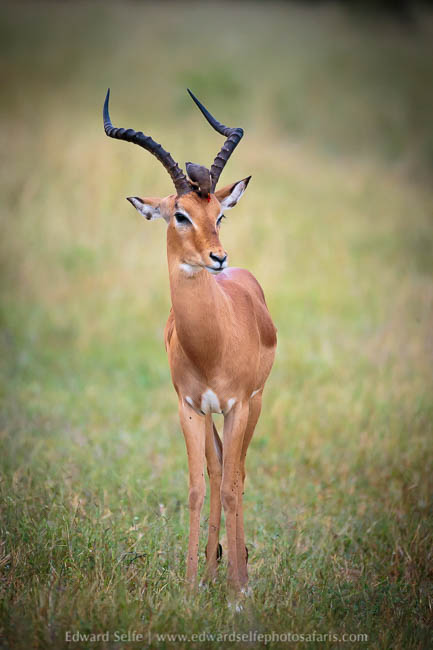
The following day, we headed off to where we had left the leopard, hoping to find where she had successfully made a kill. We sat with the nearby impalas, hoping that they might alert us to her presence, but I think she had moved on.
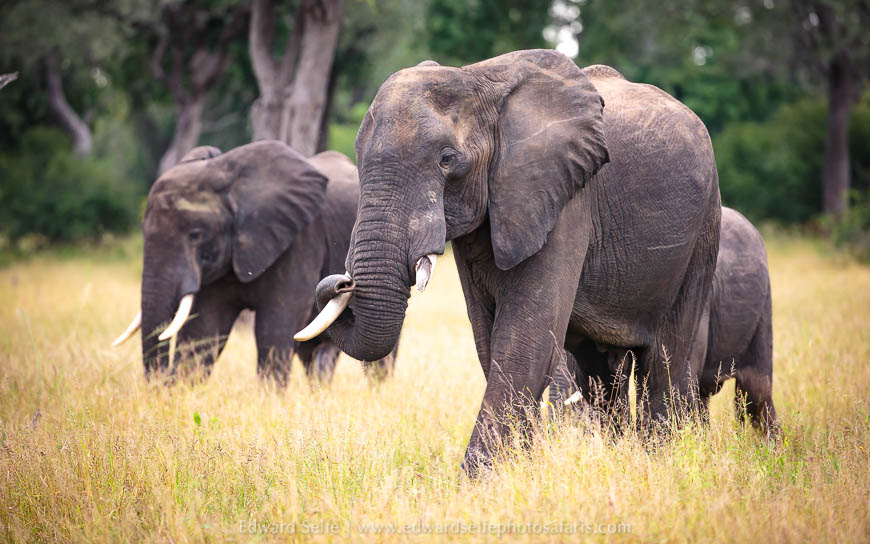
During that morning drive, we found and photographed elephants, giraffe, zebra and lots of birds…not too bad for a first morning out. The light was softened by a blanket of cloud-cover allowing us to shoot late into the morning.
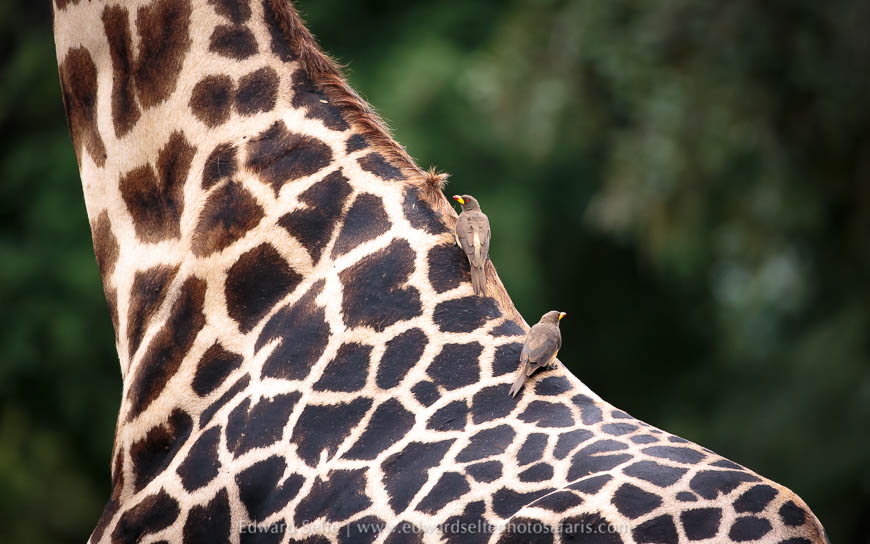
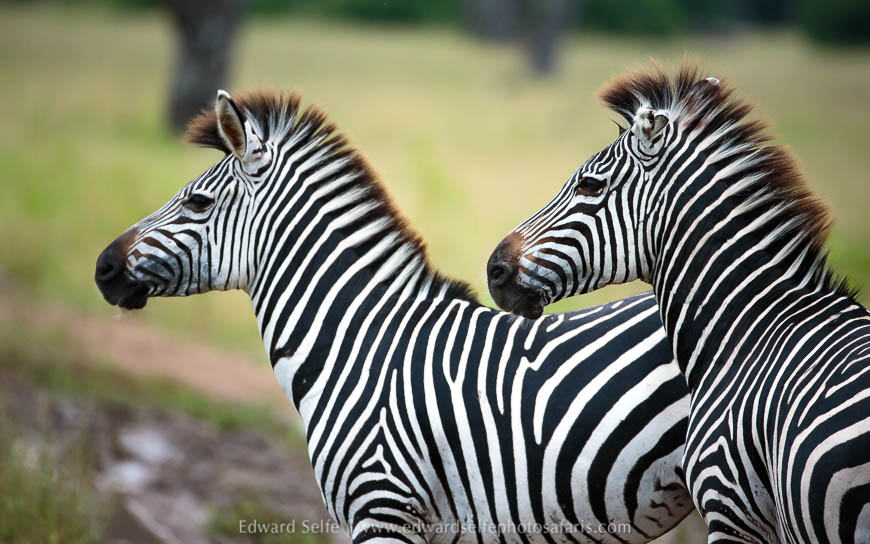
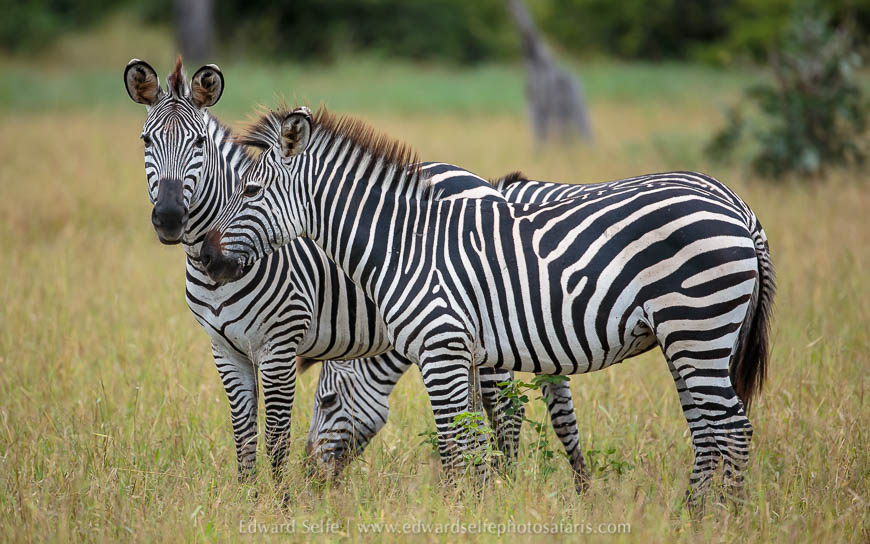
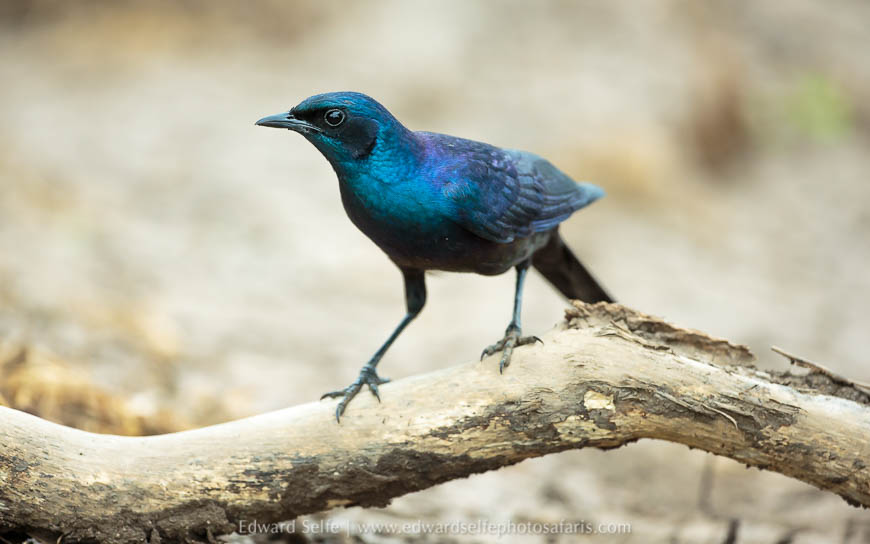
This starling joined us at coffee break, presumably hoping for some biscuit crumbs!
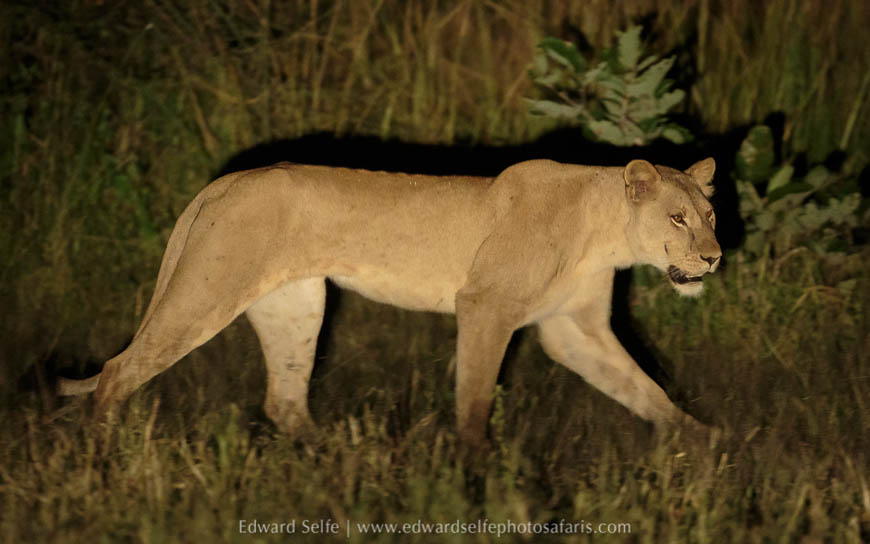
We had heard lion calls in the night, but not seen the lions the following day. So we spent the afternoon searching for them. They were elusive, calling from areas which we couldn’t access due to the water levels, but they finally emerged on to the road and hunted along the edge.
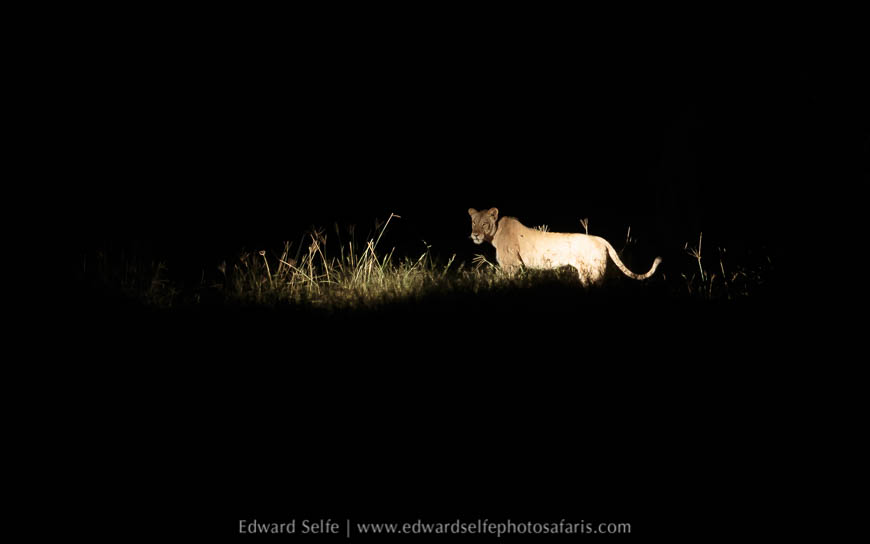
There were a number of culverts under the road and these lions appear to know that they are sometimes used as refuges by warthogs, so each culvert was carefully checked. In one of them, a leopard was hiding and it shot out, paused to look at us momentarily and then disappeared into the night!
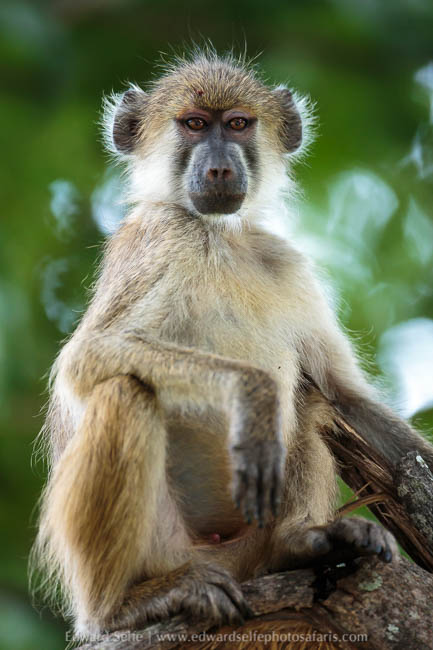
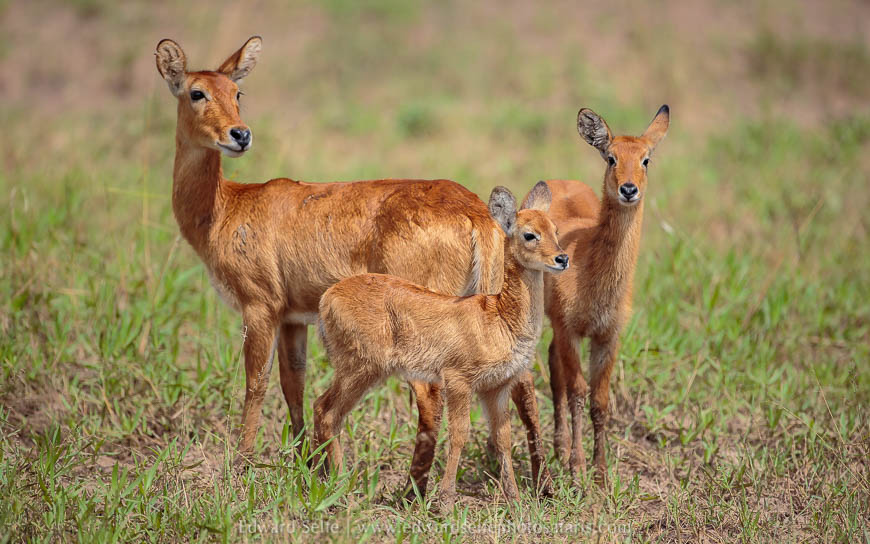
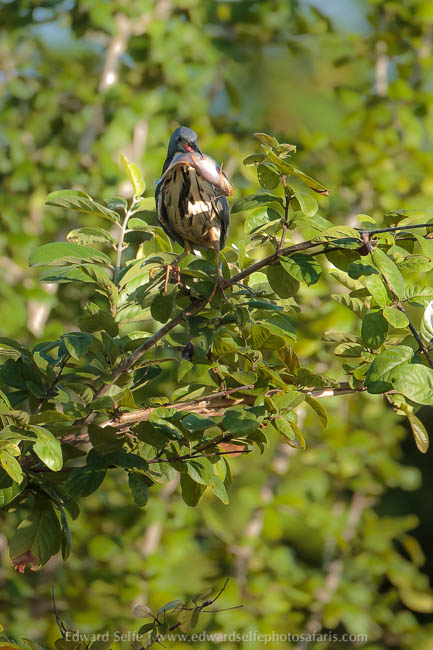
The rains is a time of regeneration, breeding, life and health. Birds are nesting, feeding chicks and all the animals are well-fed and thriving. We watched a dwarf bittern foraging for food in the roadside pools before capturing a cat fish that appeared to be too big to handle!
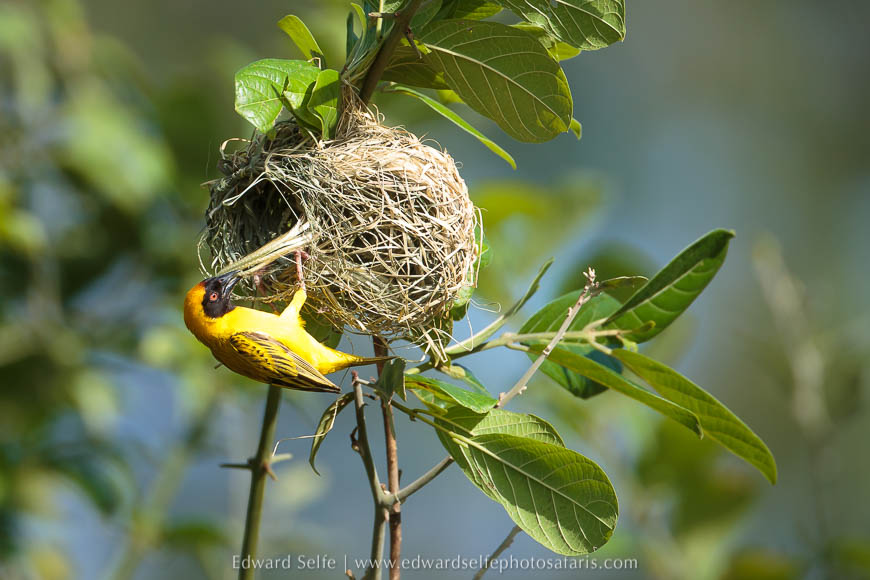
After finishing their latest brood, southern masked weavers destroy their nests, removing all the nest lining and the strong grass stems that they have painstakingly threaded together just a few weeks previously. It’t not clear why they do this – as many other weavers don’t – except that it allows them to reuse the site of the old nest.
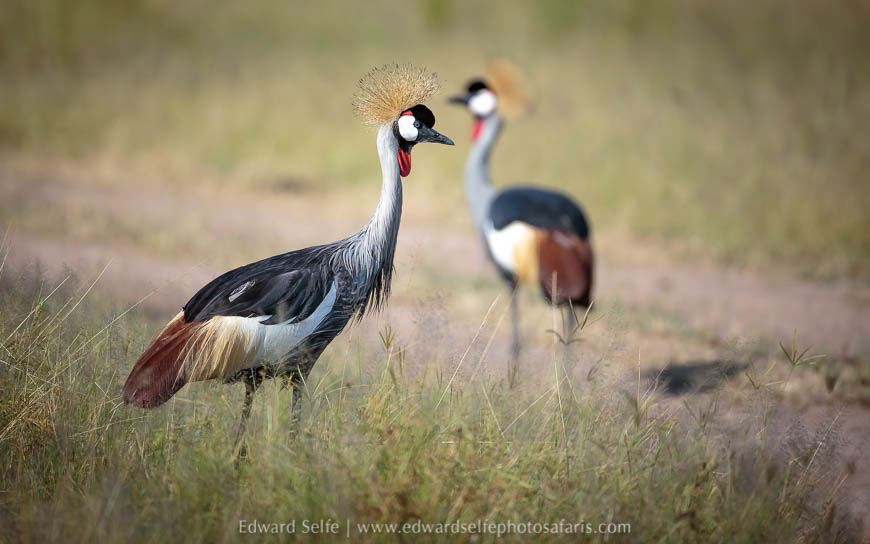
Perhaps the most elegant of Luangwa’s birds, a pair of crowned cranes hunted for insects in the grasslands.
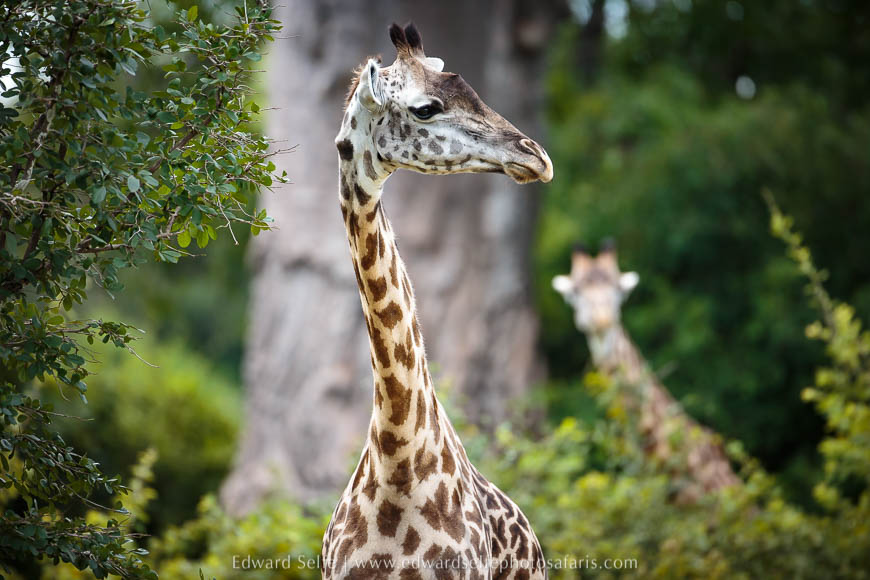
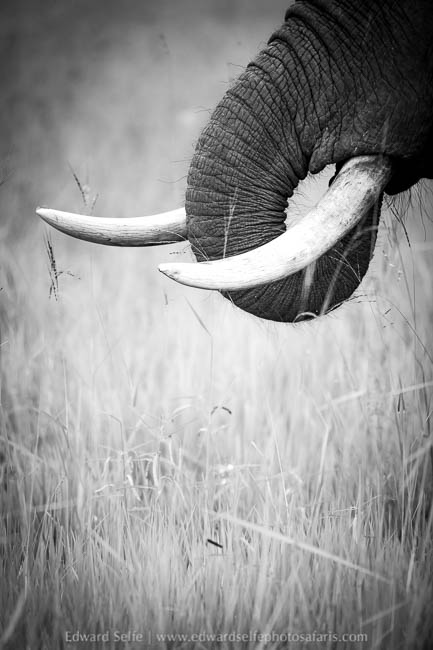
A longer journey down towards the southern central area of the park gave us a morning full of elephants, giraffes and baobab trees!
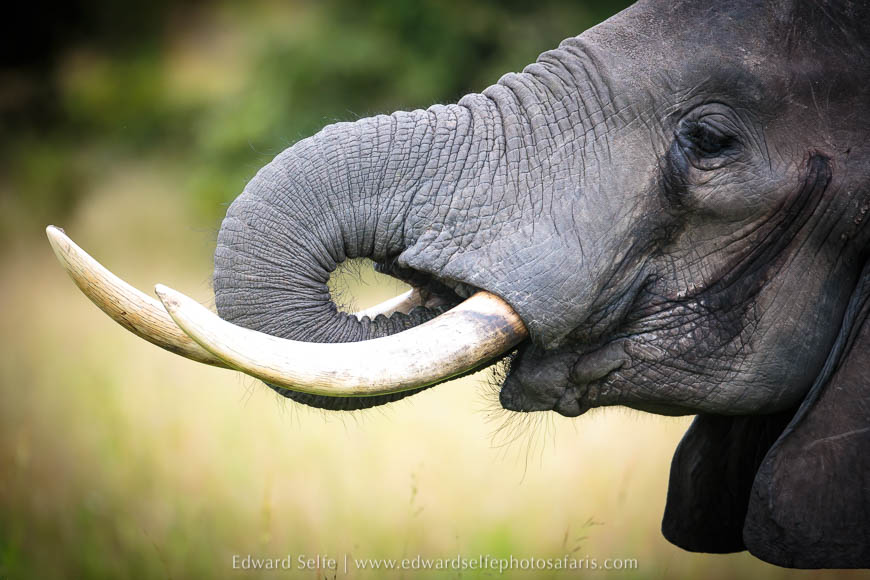
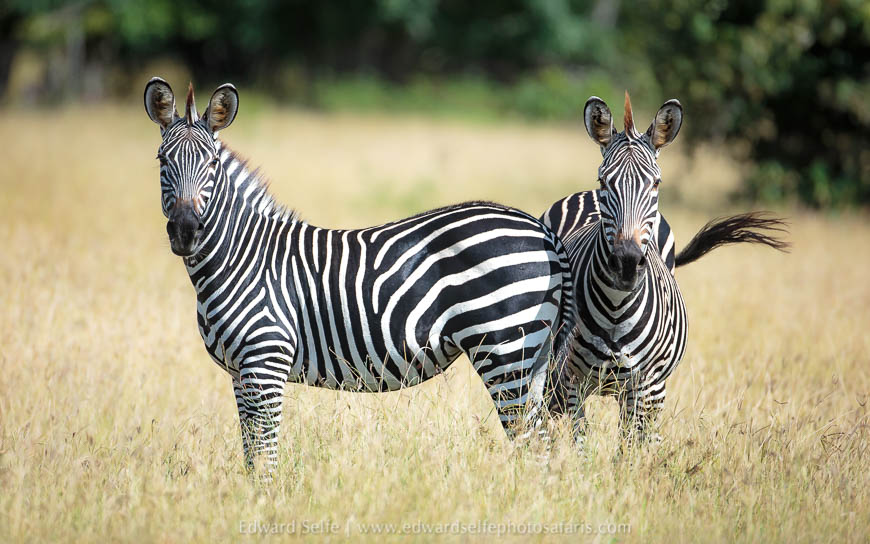
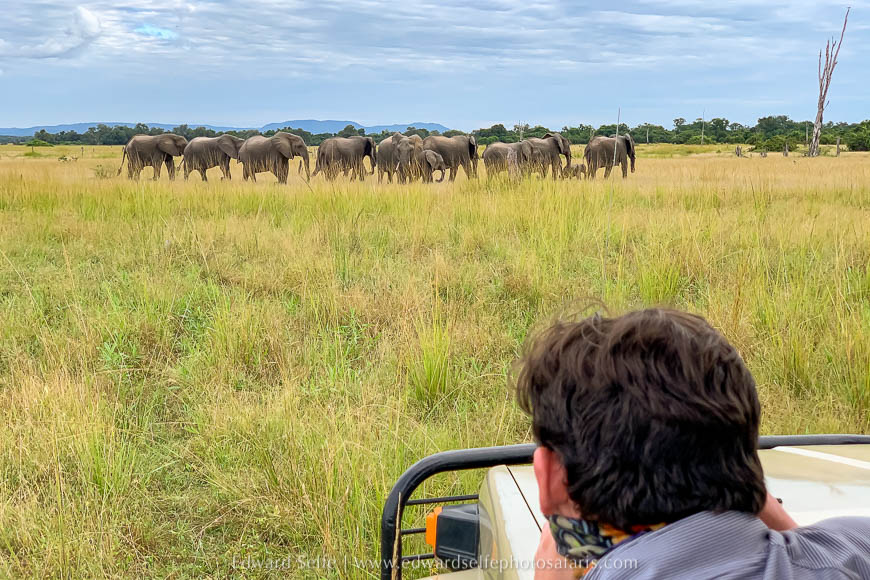
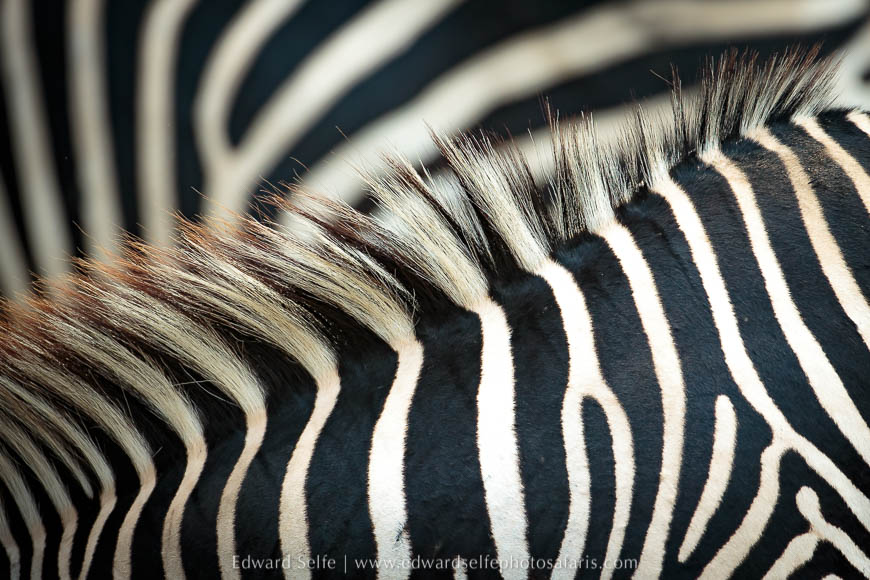
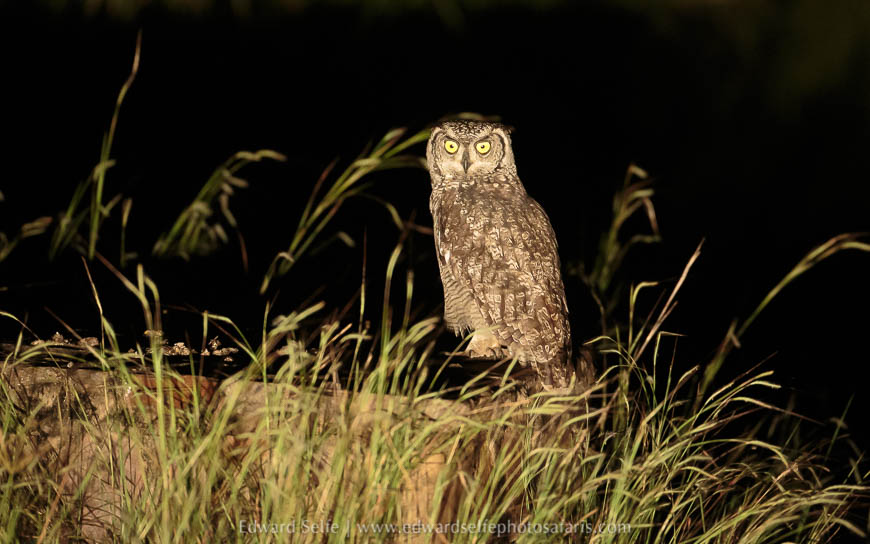
I rarely do long night drives as photography is tricky and sometimes my guests prefer to rest and start early in the morning with the light. But we had successful evening drives, finding owls, leopards, genets, hyaenas and several mongooses.
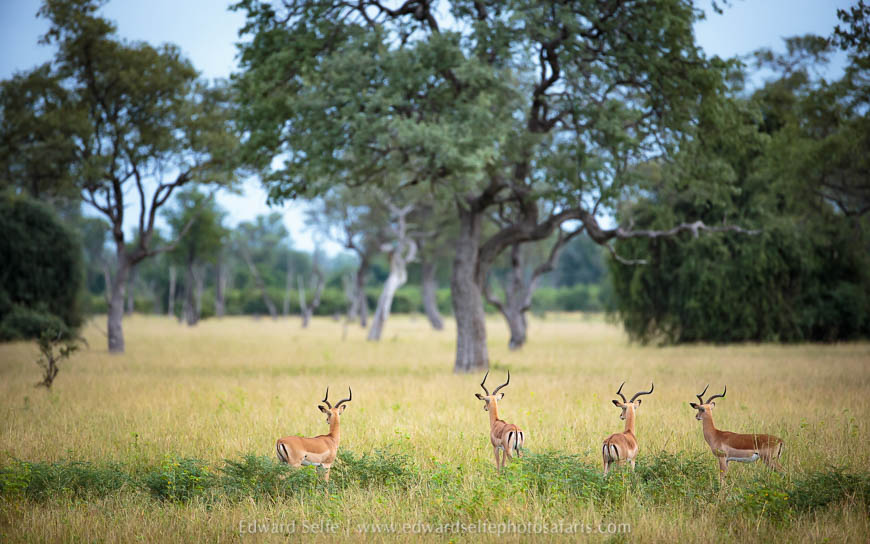
One of the great benefits of the Emerald season is that when there is nothing ‘spectacular’ to see, the scenery and wealth of wildlife allows for beautiful “animalscapes”. While these impalas were watching a hyaena in the distance, I used a long lens to show them in their habitat and illustrate the vastness of the landscape where they live.
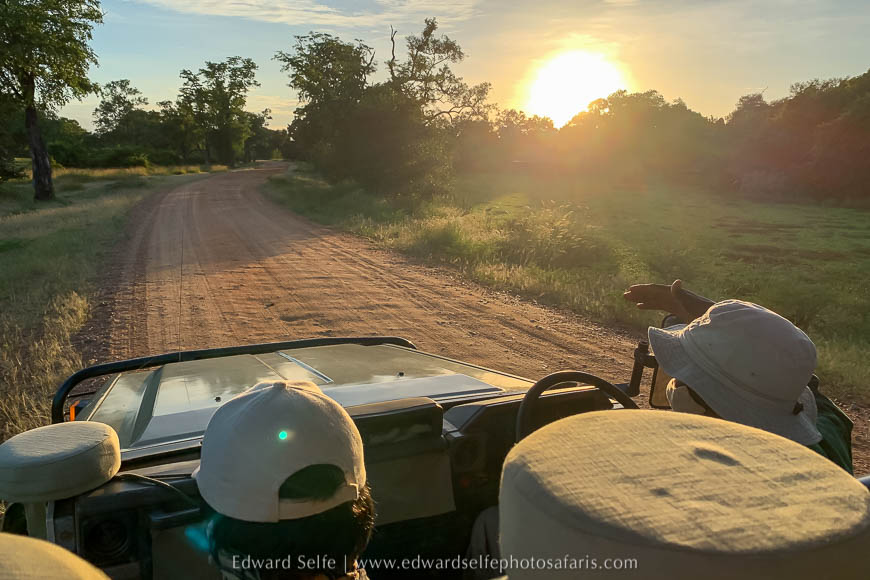
Driving the park’s roads in the very early morning, the clear, cool mornings full of promise for the day.
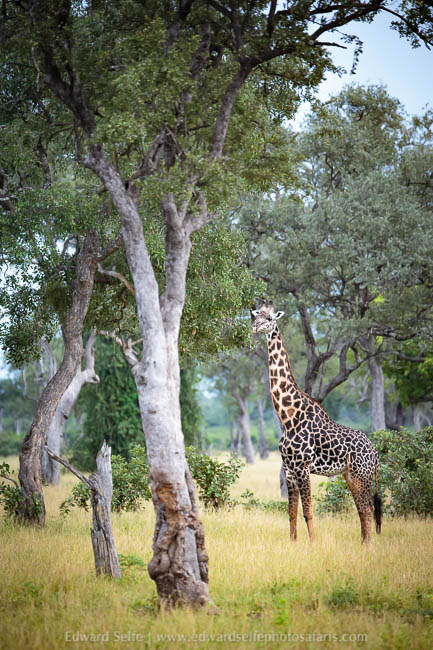
Similarly, it was fun to dwarf this giraffe bull by placing him among the large trees.
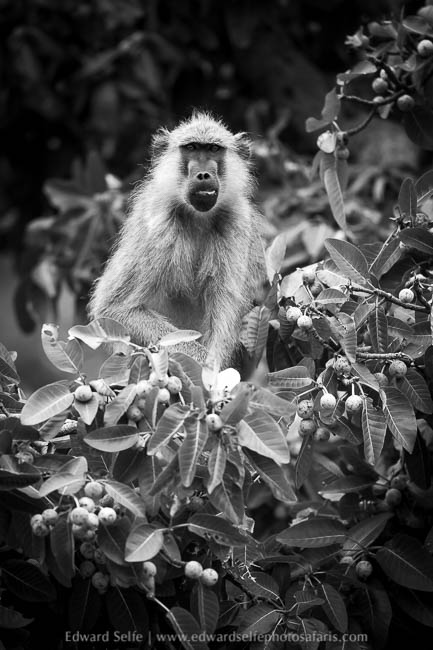
A fruiting Zambezi fig gave us lots of entertainment; we passed by each day and found baboons, elephants, birds and warthogs feasting on the fruits.
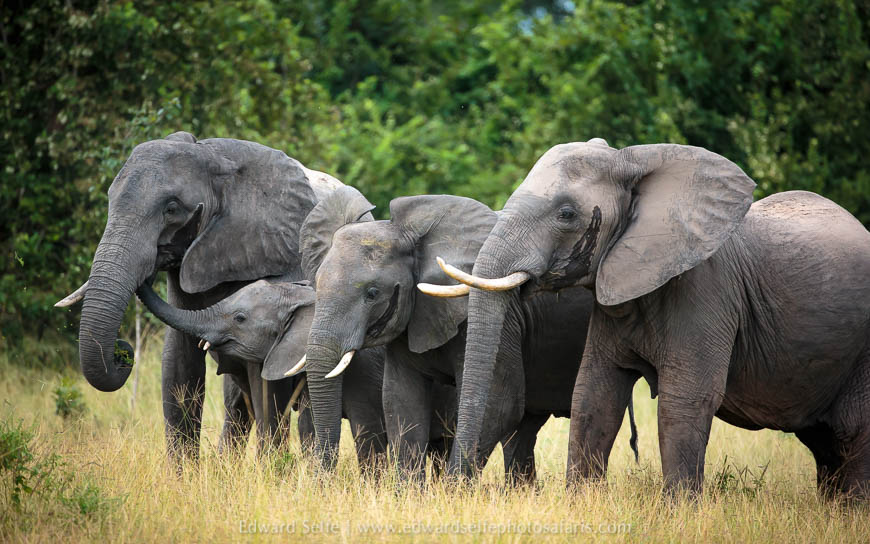
We had high hopes for a wild dog sighting when this family herd of elephants bunched up together and wheeled round, bellowing indignantly. This is standard behaviour in response to wild dogs (even though dogs pose no threat to elephants) but it was not the case, and we didn’t discover the source of their frustration.
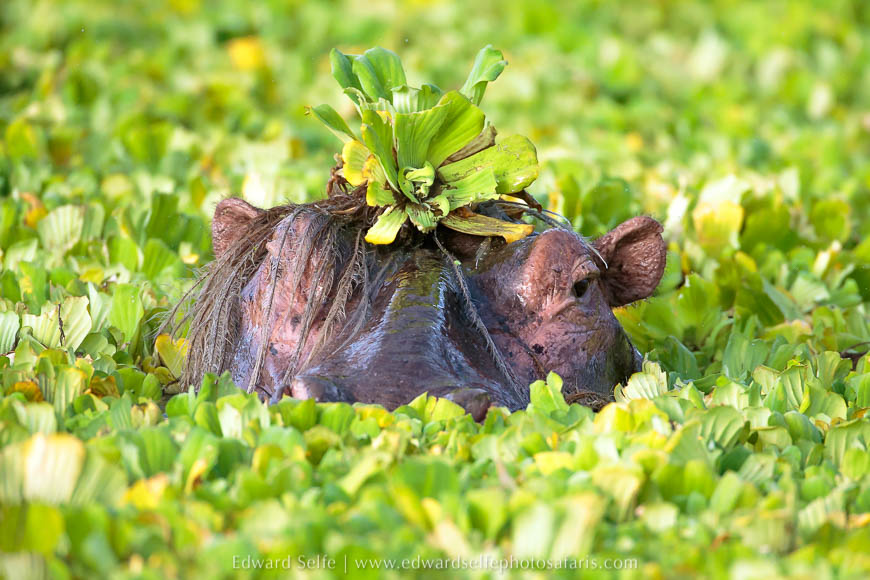
As always on my tours, I try to blend lots of time moving slowly through good habitat seeing what appears with some targeted time at certain hot-spots. A cabbage-covered lagoon proved to be an excellent hot-spot which we visited late one afternoon when the hippos were just waking up. A large bull repeatedly sank and emerged from the water, collecting varying amounts of cabbage on his head!
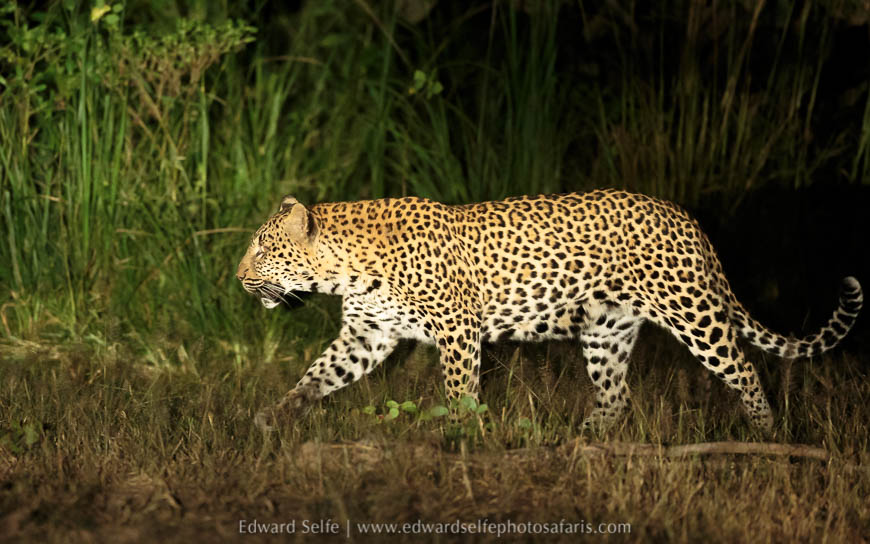
On the third night, we tracked down another leopard who was also hunting. Using a red spotlight we sat with her for nearly an hour as she closed the distance between herself and a herd of impala. Eventually they got wind of her, so we briefly used a white light to take some photos, before leaving her to patrol.
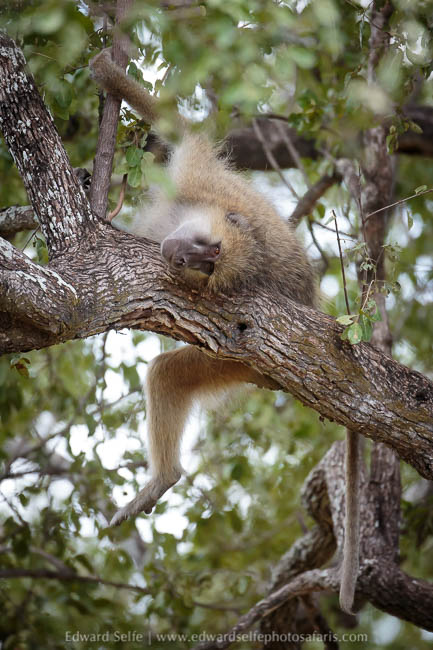
Replete with fig fruits, a large baboon observes us as we watch the activities at the fig tree.
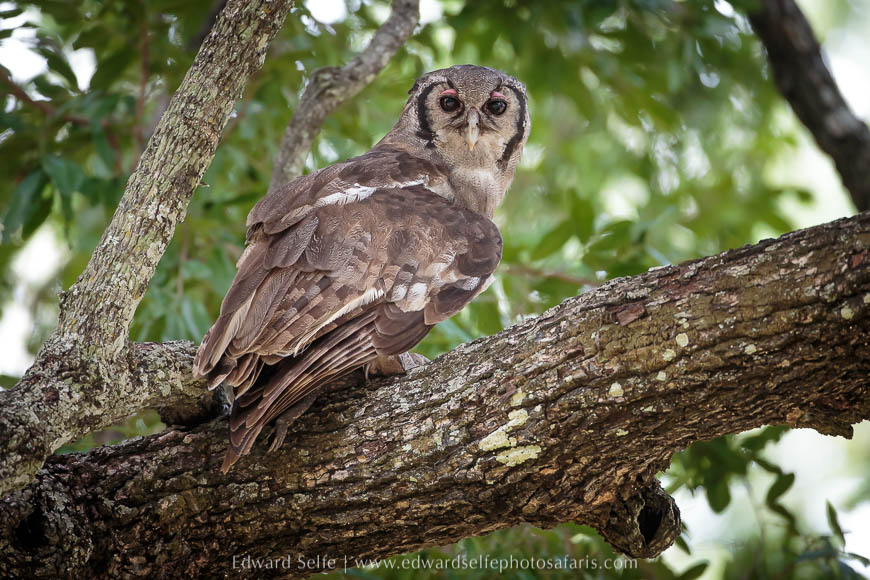
With the heavy eyelids of a sleepy owl this Verreaux’s Owl barely lifted its head from its meal of a water monitor lizard.
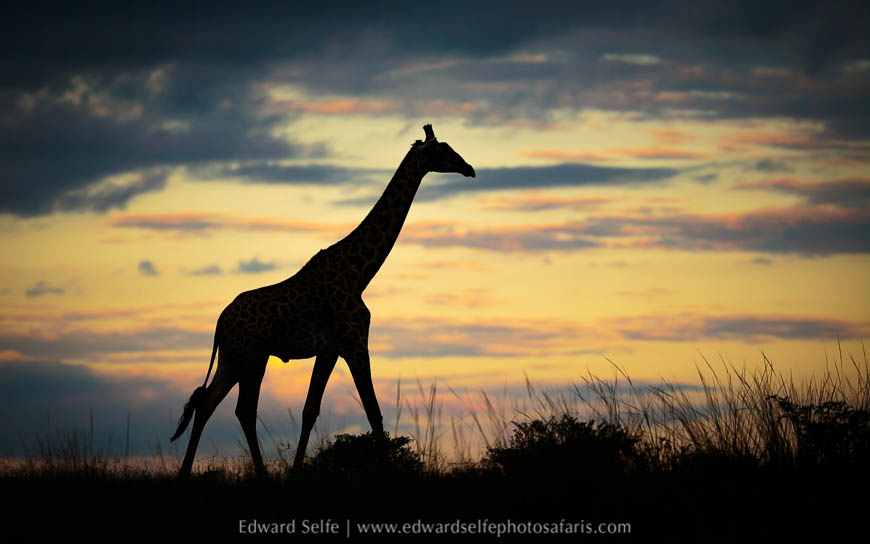
Driving up onto Chichele Hill in the late afternoon, we had a chance to skyline a giraffe against the sunset. A quick reduction in the exposure to darken the silhouette and enhance the colours made a great photo.
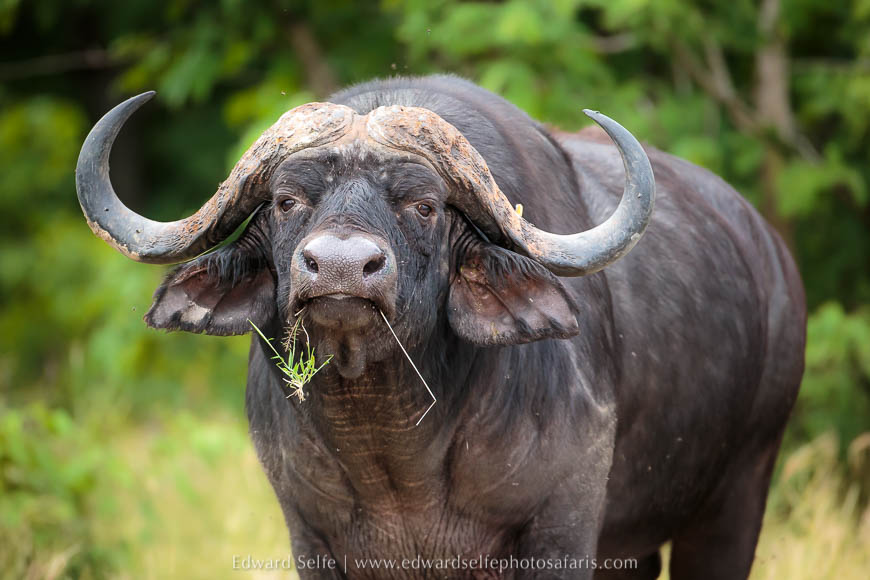
In an unusual event for this area of the park, where game is usually very accommodating, we were briefly charged by this bull buffalo but he slowed and stopped before getting too close. Who knows what was going on in his head to stimulate such behaviour but it is always a useful reminder of the wildness of this area.
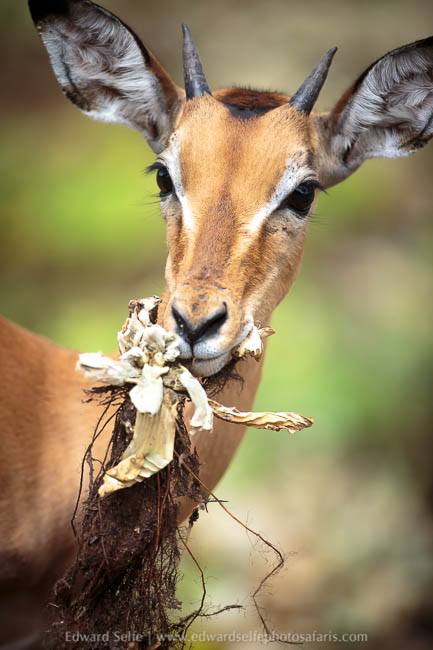
Impala appear to enjoy the cabbage that has been dragged out of the lagoons by hippos when they emerge at night. But they like to wait until it has dried and has just the right amount of ‘crunch’!
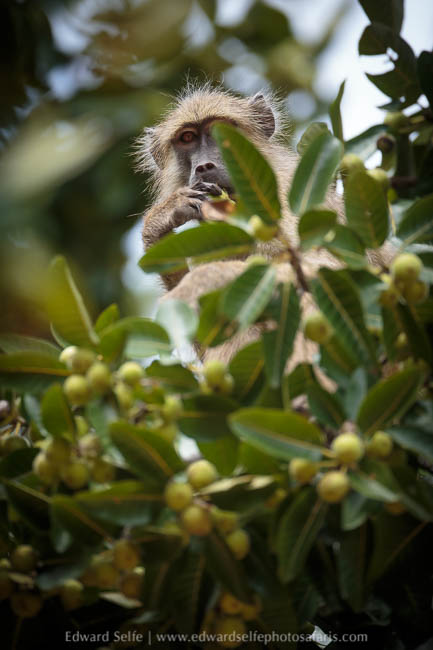
Back at the fig tree, a different troop of baboons was much more wary of us than the previous day’s….
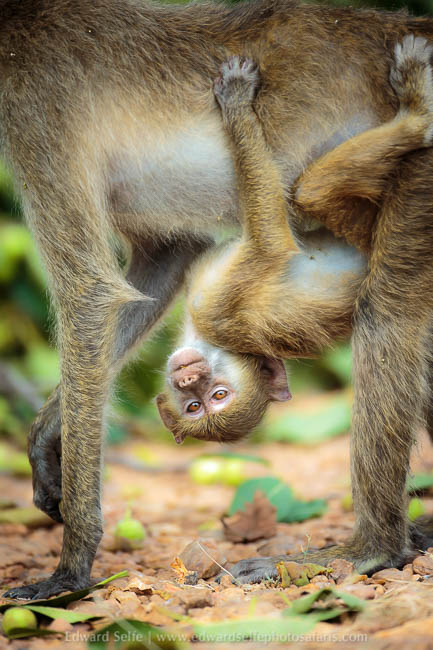
…though one youngster couldn’t resist a look as his mother carried him past!
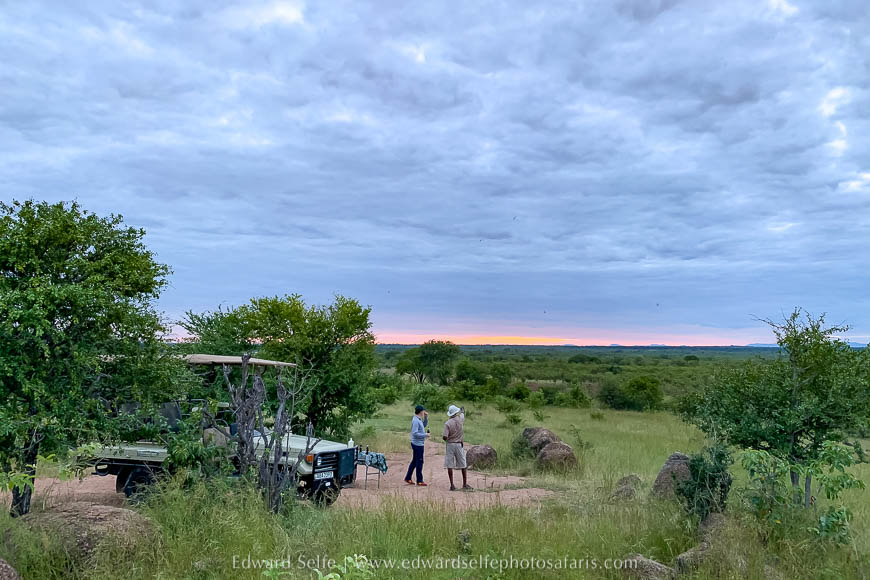
Sundowners on top of Chichele Hill on our last evening.
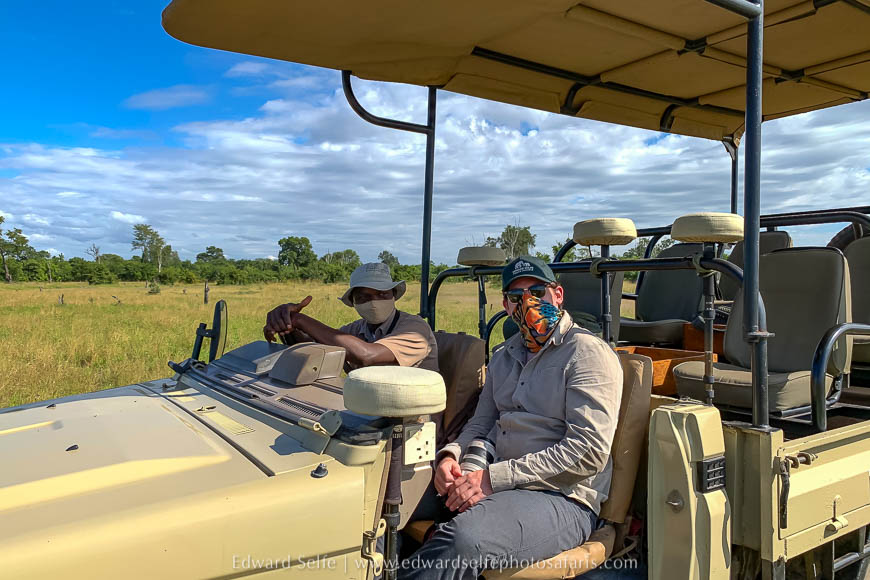
Thank you to Connor for coming on safari with me….
…and to you for following along and for reading the report. If you would like to follow in real-time, check out my Instagram page where I post daily updates from my trips. Link in the top right of this page. Until next time, thank you and stay well.


